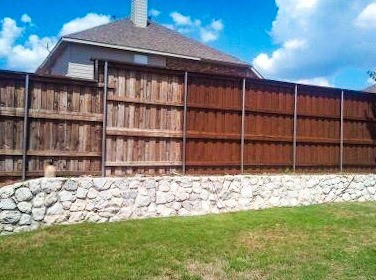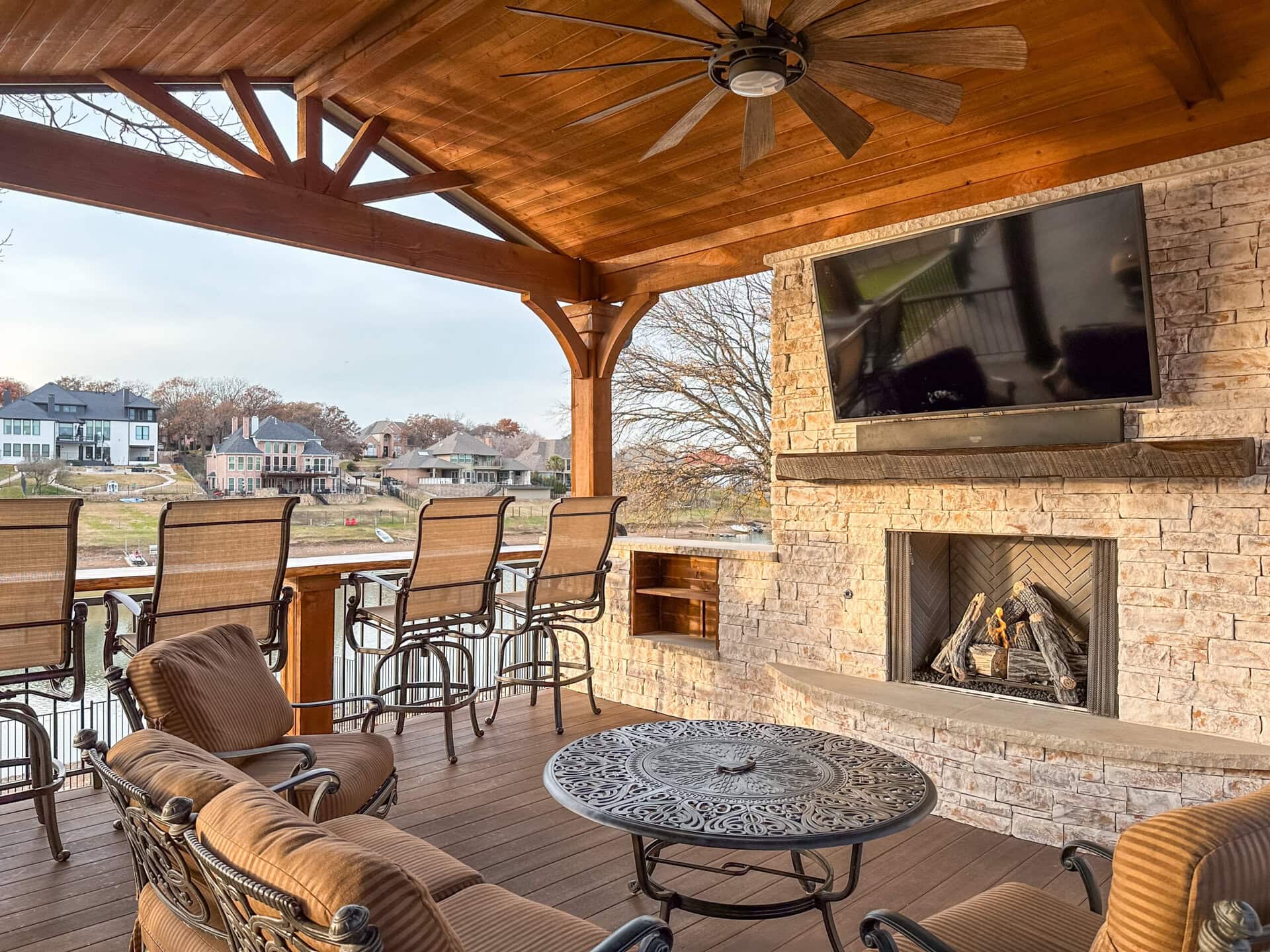Fence Height & Fence Etiquette: How High is Too High
A fence around your yard is aesthetically pleasing and gives you security and privacy. It can also increase the value of your property. If you’ve decided to fence your yard, ensure you know the fence height rules for your area. Installing or repairing your fence affects your home’s curb appeal and your neighbors’. Therefore, practicing good fence etiquette is essential to maintaining good relationships.
Table of Contents
Before You Start
Installing or repairing your fence doesn’t have to be complicated. There are several things you can do to help the process go smoothly. Here are some fence etiquette tips to consider when planning your next fencing project.
Boundary Line

Before you build your fence, find out exactly where the boundary lines exist between your home and your neighbors’ homes. Do not rely on your presumption or your neighbors’ beliefs. If you accidentally build on your neighbor’s property, the municipality could hold them liable for repairs and maintenance. That means that, although the fence is technically yours, your neighbors can decide to change it or tear it down. It’s better to invest the time and money in a surveyor now than to open yourself to many problems later.
A good rule of thumb when installing a fence is to build 1 to 2 feet inside the property line. This firmly establishes that the fence is on your side of the boundary. It also gives you enough space to access the exterior of your fence without invading your neighbor’s property.
Check Local Laws
Laws vary from city to city and state to state, so check the local laws before establishing a physical and visible boundary between you and your neighbors. Zoning laws may limit what you can and cannot do with your fencing. For example, if you have a corner lot, you may be restricted on how high you can make your fence to prevent obstructing motorists’ field of vision. To be safe, check with your local zoning office before obtaining permits and starting your fencing project.
Check with Your HOA
If you live in a neighborhood with a homeowner’s association or housing covenant, there are likely guidelines restricting what you can and cannot do with your property. Such agreements are put in place to preserve home values in that area. The homeowner’s association could determine certain design aspects, such as the type or style of the fence and the stain color. You may even need permission from the HOA before legally installing your fence. If you live in such a neighborhood, you should carefully examine your deed before solidifying your fencing plans and starting construction.
Talk to Your Neighbors

If you’re considering installing or replacing a fence on your property, practice good fence etiquette and take some time to talk to your neighbors about the changes you want to make. Not only is it respectful, but it ensures there aren’t surprises when construction begins. They may find the construction phase a nuisance, especially if they’re caught off guard, causing you additional headaches along the way.
Talking with your neighbors about your plans lets them express concerns about the design. After all, in many cases, it’s partially their fence, too. Are they afraid it will be unsightly? Will it block the sunlight in their garden? The time to find out about these concerns is when you’re in the planning phase. There may be adjustments that will allow you to accommodate your neighbors while still meeting your wishes. If you plan to live in your house for a while and believe your neighbor is likely to do the same, it’s good form to get their input. Getting your neighbors on board now will go a long way toward preventing friction and frustration later.
If you need a place to start, download our fence etiquette letter to send to your neighbors.
Building a Good Fence
Once you’ve established where the boundary lines lie and checked in with all the necessary entities to ensure that you’re in the clear, the next step is to begin construction. Aside from measuring to ensure you get the right amount of fencing and hiring a good contractor to install your fence, here are some other things to consider.
Materials
When choosing fencing materials, be careful not to stray too far from the design and look of your home and the other fences in your neighborhood. Wood is the most commonly used material, and for a good reason. It’s durable, attractive, and, with some maintenance, can give your home the sophisticated look it needs. Materials like wrought iron, vinyl, and chain-link require less maintenance and upkeep but offer a different level of privacy than wood.
Learn More: Choosing the Right Fence
Maintenance
Regardless of which material you choose, all outdoor features need proper maintenance. Always remember that fencing adds to the value of your home, should you ever decide to sell it. Ensuring that your fence is properly taken care of will protect your investment and drastically extend the life of your fence.
Fence Height
If you’re trying to maintain your privacy and keep pets in, the fence around the backyard should be about 6 feet tall. If you’re in an area where deer sightings are common, your fence should be about 8 feet tall. A fence around the front yard should typically be at most 4 feet tall. This allows you to see still what’s going on around you while keeping children and pets in. Fences in the front of homes should also be easy to see to avoid blocking drivers’ fields of vision.
Finished or Unfinished?

Many fences look the same on both sides. But when this is not the case, placing the finished or more attractive side where it is visible to the neighborhood is customary. This drastically improves your home’s curb appeal and, in turn, its value. If you’re installing fencing between your house and your neighbor’s house, it is the best expression of etiquette to place the finished side facing them and the unfinished side toward you.
Fence Height Rules and Your Personal Style
Following the laws and housing development rules regarding installing a fence is essential. You’ll be able to find a style and a design that will both follow the rules and meet your aesthetic requirements. Fences add something hard to define—a look of permanence, security, and a feeling that the property is well cared for. Whatever height you choose, your new fence will contribute to the value and enjoyment of your home.
When planning and preparing to build a fence, the more you can do on the front end, the better. After all, as Robert Frost once said, “good fences make good neighbors.” Practice good fence etiquette – learn the law, talk to your neighbors, and be as respectful and considerate as possible. By following these helpful tips, you’re well on your way to having the fence you’ve been dreaming of. Contact us today for an estimate.
Recent Posts
Top 5 Outdoor Living Space Ideas for 2026 in North Texas
Composite Deck Care: Your Texas Winter Maintenance Guide
How to Get Your Outdoor Living Space Holiday-Ready in Dallas, TX
Fireplaces vs. Fire Pits: The Ultimate Guide to Outdoor Fire Features
Categories
Request an Estimate Today
and their uses, you can create a concept that works for your
family. Keep in mind the purpose of the structure, whether natural
light in your home is a factor, and where you want the focal point
of your backyard to be. Once your gears get turning, reach out to
request an estimate on your concept.





